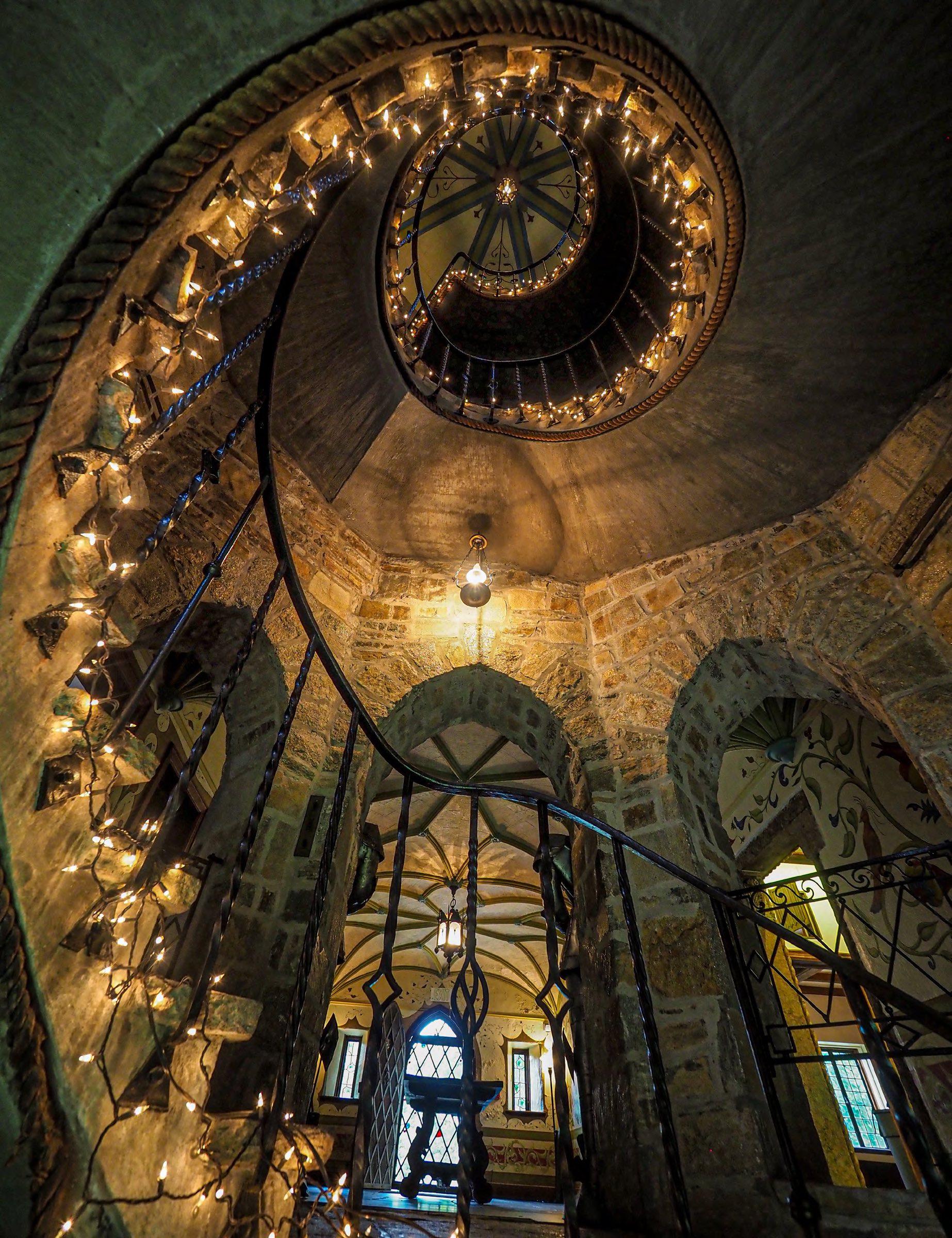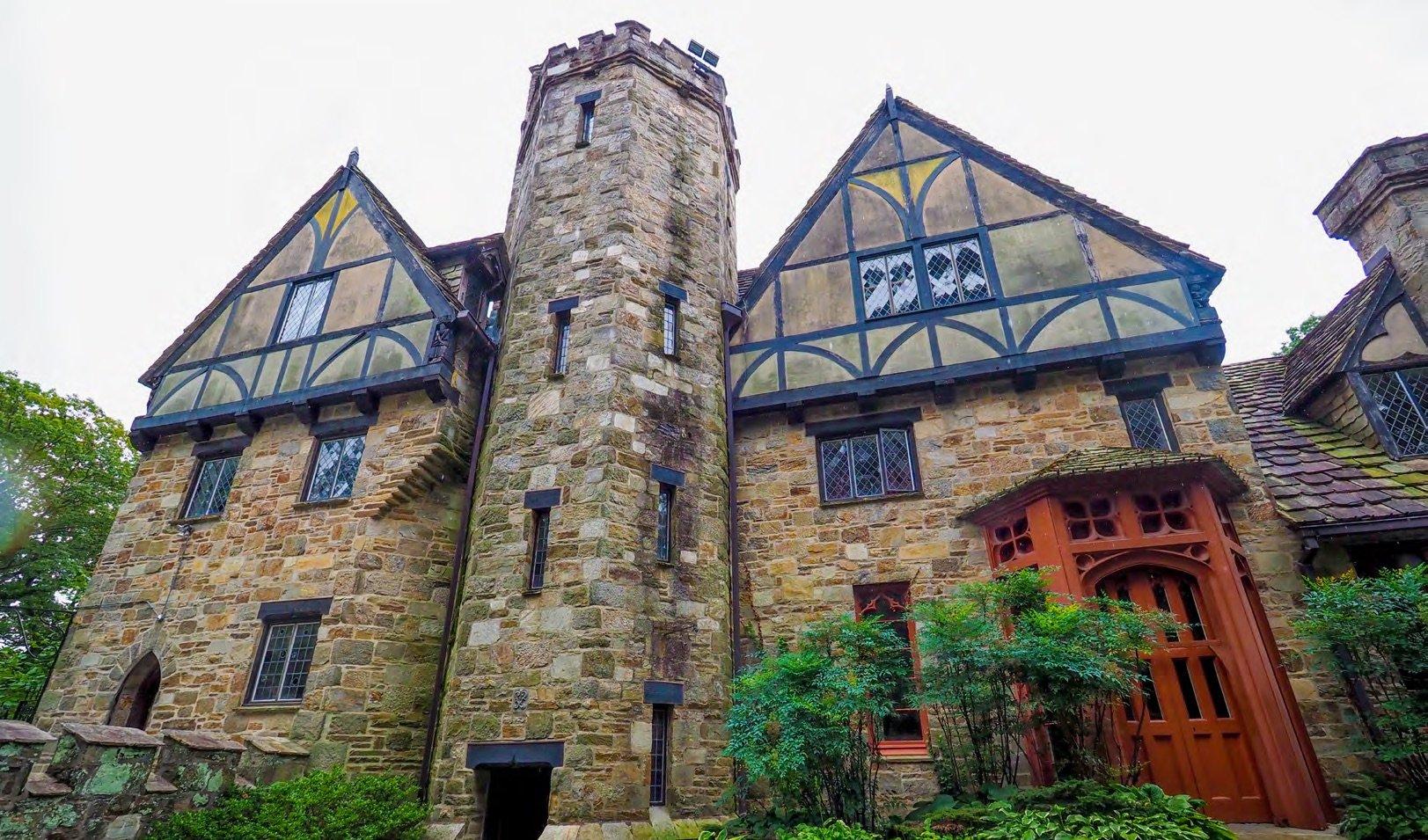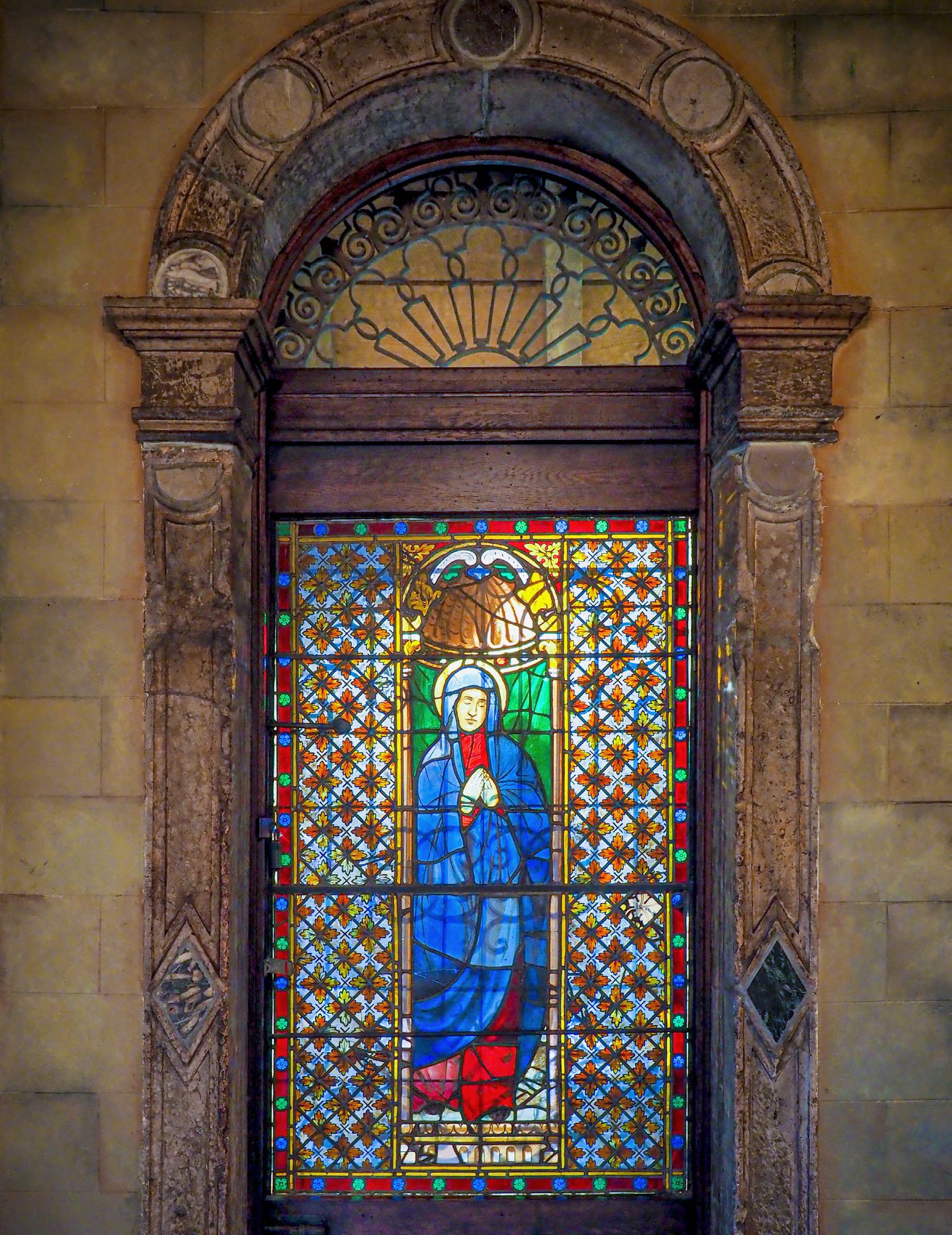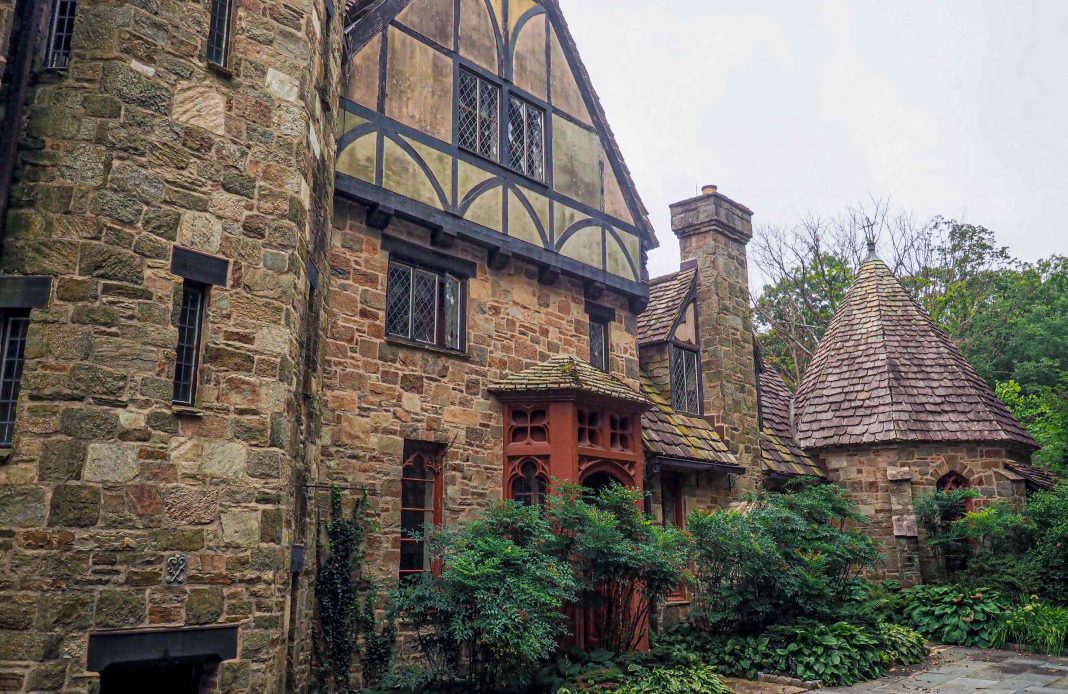PHOTOGRAPHY BY STEVE PARKE
One might not imagine Baltimore as home to a fairy-tale castle like the one on these pages, but the world (and this city, home to Enchanted Living) is full of surprises and magic, as you well know. The Cloisters is actually technically a Gothic manor house that was built between 1929 and 1932 on a countryside hilltop that reminded its owners of France. The design itself is based on European manor houses and the owners’ extensive travels, during which they collected all types of art, artifacts, furniture, and more that they shipped to a waiting Baltimore warehouse. Imagine slowly assembling your dream home as you travel the world, salvaging elaborately carved fireplace mantles from French chateaus and acquiring stained-glass doors from 16th century houses in Verona.
These owners were Sumner Parker and G. Dudrea Parker, Baltimore natives who by all accounts sound more than delightful. He made his fortune producing the ornamental ironwork that still decorates the city while she was a writer and poet—not to mention a home designer so fastidious and beauty-conscious that she occasionally climbed to the Cloisters rooftop to place clumps of moss just so. The Parkers also kept an address in the city’s Mount Vernon neighborhood and had three children and a slew of grandchildren, all of whom likely grew up with an especially acute sense of wonder.

The couple were not stingy with the beautiful objects they collected: They often opened both houses to the public and actually designed the Cloisters so that sections of the house could be accessed by the outside world as a museum. People could enter through the library, which was full of rare manuscripts, and then visit the gallery with its collection of tapestries, porcelain, paintings, and other wonders before climbing the back staircase to peruse Mrs. Parker’s second-floor collection of 18th century dollhouses (!) as well as the Parkers’ collection of colonial-era treasures on the third floor.
The castle itself has more than thirty rooms, not to mention a fairy-lit four-story spiral staircase, numerous fireplaces, painted murals, stained-glass windows, and a chapel and cloistered garden. Walking through this space, especially with some willowy chanteuse-like Victorian supermodels and piles of long dresses in tow, one will encounter all manner of secret stairways and nooks and windows and libraries and even a couple of armored knights. Plus there’s a windmill. The original apparently burned down, but after the death of her husband in 1945, Mrs. Parker had it rebuilt in his memory, complete with an ultra-romantic, now worn plaque stating so. At one point the windmill pumped water to an outdoor pool, which was destroyed by Hurricane Agnes. Facilities manager Annie Applegarth claims there is
no great romantic story behind the original windmill and its subsequent replacement, but we have our theories.
When Mrs. Parker died in 1972, she willed the entire property to the city of Baltimore. At one point it was a children’s museum where moppets could try on a mini suit of armor, or dress up as princesses and soldiers in the Alice in Wonderland room, or visit a real beehive in the Bee Room, or make paper masks. Today the Cloisters hosts weddings, retirement parties, and all sorts
of other celebratory events, including occasional time-traveling photo shoots for enchanted magazines.




































